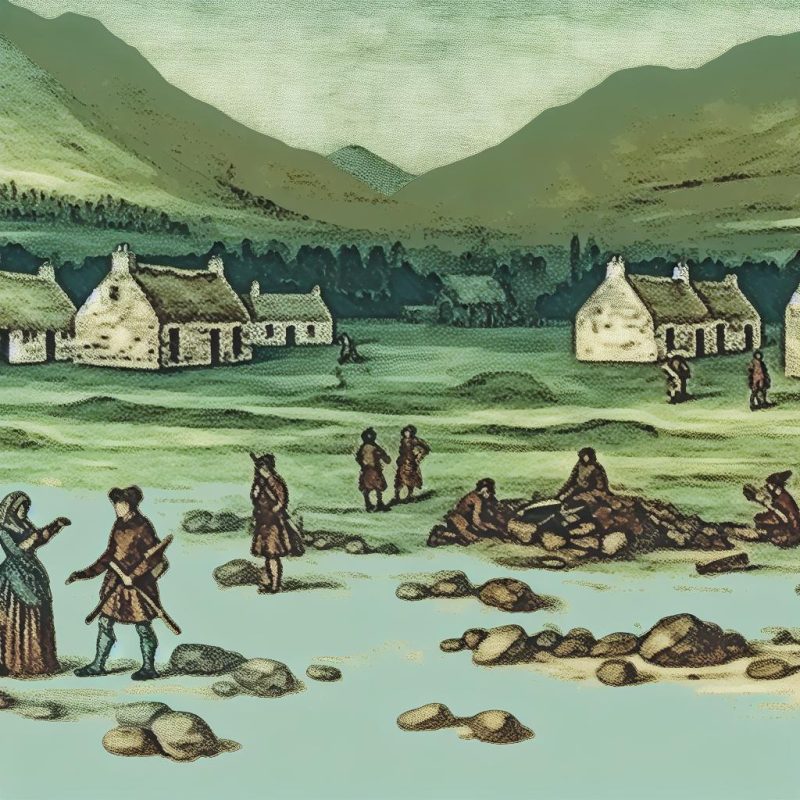Introduction to Clan Campbell
Clan Campbell is a prominent Scottish clan, whose influence and legacy are deeply embedded in the historical landscape of Scotland, particularly in the Argyll region. This clan is noted for its substantial authority and power, stretching from the late Middle Ages into modern times. In this article, we will explore the origins of Clan Campbell, examining their early history and rise in the Argyll area, a picturesque yet strategically crucial region in western Scotland.
Early Origins
The origins of Clan Campbell can be traced back to the medieval era, with its early influence recorded during the 13th century. The first known leader of the Campbells was Gillespie, also referred to as Archibald, marking the beginning of the clan’s historical journey. Although the exact ancestry of the Campbells is not definitively known, it is believed that they may have originated from Brittonic or Gaelic roots, which connected them to other indigenous groups inhabiting the region before they emerged as a unique clan.
Linguistically, the name “Campbell” is derived from the Gaelic term “Caimbeul,” which translates to “crooked mouth.” This designation possibly refers to a notable familial trait or reputation, serving as a symbolic representation of the clan’s identity over the centuries. As the Campbells began to carve a niche for themselves in the complex tapestry of Scotland’s history, their lineage gradually became recognized as a distinct clan entity.
The Rise to Prominence
The ascent of the Campbell clan to a position of prominence took place during the 14th century, a time marked by the Wars of Scottish Independence. A strategic alignment with Robert the Bruce, a key figure in Scotland’s struggle for independence from English dominion, proved instrumental in elevating the clan’s status. By supporting Bruce, Clan Campbell secured substantial rewards in the form of lands and titles, establishing a robust foundation for their continuing influence.
The wars during this period were more than mere conflicts; they were a test of loyalty and political acumen. By choosing to stand alongside Bruce, the Campbells positioned themselves advantageously, gaining territory that would enable their expansion and consolidation of power. This decision was a pivotal moment in their history, setting the course for their future involvement in regional and national politics.
Establishing a Stronghold in Argyll
The region of Argyll became synonymous with Campbell power, largely due to strategic land grants and shrewd acquisitions. The clan’s central stronghold was Inveraray, which soon developed into the center of authority for the Earls, and later the Dukes, of Argyll. The geographical advantages offered by Argyll, combined with the economic investments made by the Campbells, ensured their dominance over this significant area.
Argyll’s geographical positioning was not just critical for defense but also for controlling trade and communication routes within Scotland. This stronghold served as an administrative and political hub, from which the Campbells wielded their influence over both local matters and broader Scottish affairs. Through effective management of their lands and resources, the clan was able to maintain a resilient power base well into the subsequent eras.
Shaping Local and National Politics
The influence of Clan Campbell extended well beyond the local domain, marking its presence in the political arenas of both Scotland and Britain. The Campbells played active roles in various conflicts and political developments, demonstrating their commitment to shaping governance and statecraft.
During the English Civil War, the Campbells notably aligned with the Parliamentarians, supporting the move towards a more centralized government. This stance was reflective of their pragmatic approach to politics — one where alliances were often formed not only by sentiment but also by strategic necessity. Through these political maneuvers, the clan further cemented its reputation as a formidable political force, actively involved in the power dynamics of the time.
The Legacy of Clan Campbell
The legacy of Clan Campbell continues to be a significant part of Scotland’s historical narrative. The impact of the clan is not only visible in the tangible presence of their ancestral lands, such as Inveraray Castle, but also in the broader historical implications of their actions and decisions throughout Scottish history.
While their role in shaping events and politics was sometimes contentious, the contributions made by the Campbells were pivotal in defining various aspects of Scotland’s development. Their story highlights a journey through complex socio-political landscapes, wherein they adeptly navigated challenges and forged a lasting legacy.
For those interested in delving deeper into the history and influence of Clan Campbell, further information can be explored through an insightful resource on Scottish Clans. This resource provides additional context and elaboration on the storied past of the Campbells and their place within the rich tapestry of Scottish history.
In conclusion, the exploration of Clan Campbell’s origins, ascent, and legacy reveals a narrative rich with strategic ingenuity, calculated alliances, and enduring influence — a testament to their remarkable role in shaping the history of Scotland.

